vegetables
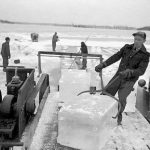 Before the 1830’s, food was preserved by salting, spicing, pickling or smoking. The people back then had no refrigerators, so butchers slaughtered meat only for the day’s trade, as preservation for longer periods was not practical unless you made jerky or something. Dairy products and fresh fruits and vegetables subject to spoilage were sold in local markets since storage and shipping farm produce over any significant distance or time was impossible. Milk was often hauled to city markets at night when temperatures were cooler. Ale and beer making required cool temperatures, so its manufacture was limited to the cooler months. The solution to these problems was found in the harvesting of natural ice.
Before the 1830’s, food was preserved by salting, spicing, pickling or smoking. The people back then had no refrigerators, so butchers slaughtered meat only for the day’s trade, as preservation for longer periods was not practical unless you made jerky or something. Dairy products and fresh fruits and vegetables subject to spoilage were sold in local markets since storage and shipping farm produce over any significant distance or time was impossible. Milk was often hauled to city markets at night when temperatures were cooler. Ale and beer making required cool temperatures, so its manufacture was limited to the cooler months. The solution to these problems was found in the harvesting of natural ice.
Before the invention of refrigerators in the early twentieth century, ice was harvested every winter from the lakes and stored in large ice houses, the proprietors then sold the ice to shippers of fresh fish, waterfowl, and produce for train deliveries to large cities. The ice harvesting process was labor intensive, requiring 20-100 men for one to four weeks. I suppose it was good temporarily, but was not permanent work.
Nineteenth-century ice harvesting began well before the actual cutting. As soon as the ice was strong and thick enough to support horses and equipment, work forces cleared away the insulating snow, sometimes many times, if necessary, to encourage the formation of stackable, thicker blocks. When the ice was thick enough, the field was marked in squares, using a horse-drawn marker, which scored slightly deeper into the ice, and finally the blocks were cut by hand with the use of large-toothed one-man saws. The blocks were then floated to the large adjacent commercial ice house for stacking, or to a railroad loading ramp for shipping. The system worked pretty well, and lasted throughout the century, the major change being the late introduction of rotary saws that replaced hand-cutting, making the job much easier.
The latter half of the 19th century saw many attempts to perfect manufactured ice methods. The Louisiana Ice Manufacturing Company appears to have been the first one to operate regularly, one of its claims being a price considerably lower than that of natural ice. Others followed. By 1925 factory-made ice had entered the realm of big business, and natural ice had become a thing of the past…just like that. In the 19th century commercial ice houses were constructed to provide ice for general use, to stock private ice houses when supplies from the local pool were scarce and later to produce “frozen” food. Some of these ice house’s were really a barn within a barn, with 3 feet of sawdust and hay between the inner and outer walls. City dwellers had ice delivered to them by horse and wagon. The iceman had to lift from 25 to 100 pound blocks, according to the order, which was placed by the consumer putting a numbered card in the window that corresponded with the number of pounds of ice they wanted. The ice was weighed on a spring scale on the truck, but an experienced delivery man could estimate the weight. The ice was carried to a kitchen using ice tongs, and chipped with chisels to fit the compartment of the ice box.
Delivery men were known for their brawn, as they hauled heavy blocks of ice all day long, and often up flights of stairs. Nevertheless, occasionally two women teams delivered the ice. They often had access to the kitchen when no one was home, and they simply placed the ice appropriately. Some city apartments used a suspended box (a small version of the ice box) outside the kitchen window, its contents available to the cook through the raised window; others kept an ice chest outdoors on the porch, or a handsome oak refrigerator in the kitchen. Ice wagons were great for children playing in summer’s heat. They loved when the iceman dropped his ice tongs and used his ice pick to chop a small piece of ice for them to suck on, similar to today’s ice cream trucks.
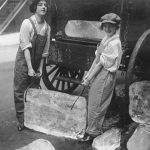
Residential ice boxes, many home-made, were of oak, pine, or ash wood lined with zinc, slate, porcelain, galvanized metal or wood. The insulator between the walls was charcoal, cork, flax straw or mineral wool. Still, the ice lasted only one day. Wooden boxes lined with tin or zinc and insulated with various materials including cork, sawdust, and seaweed were used to hold blocks of ice and “refrigerate” food. A drip pan collected the melt water…and had to be emptied daily. Electric refrigerators and freezers seriously hurt the ice industry. Although the first models were marketed before 1920. It would be a while before everyone had them, so ice delivery continued to be used, but declined yearly.
 About a month ago, my husband Bob and I went to visit family in Forsyth, Montana. We had a wonderful time visiting, reminiscing, and learning new family information. It was a trip we needed to take, because it had been far too long since our last visit. The family there is just so important to us. We knew we couldn’t let any more time pass before we went to visit. Two of the people we wanted to spend time with, were Bob’s aunt and uncle, Eddie and Pearl Hein. Eddie recently had a couple of strokes, and we wanted to show him how important he is to us, and Pearl had been taking care of him, almost on her own, and since I have been a caregiver, I know that she needs support too, even if it is just moral support. Caregiving is exhausting work, and while the patient wishes they didn’t need you to work so hard…the fact remains that they do, and they know that without you, they would be in a nursing home, or worse. Still, caregiving
About a month ago, my husband Bob and I went to visit family in Forsyth, Montana. We had a wonderful time visiting, reminiscing, and learning new family information. It was a trip we needed to take, because it had been far too long since our last visit. The family there is just so important to us. We knew we couldn’t let any more time pass before we went to visit. Two of the people we wanted to spend time with, were Bob’s aunt and uncle, Eddie and Pearl Hein. Eddie recently had a couple of strokes, and we wanted to show him how important he is to us, and Pearl had been taking care of him, almost on her own, and since I have been a caregiver, I know that she needs support too, even if it is just moral support. Caregiving is exhausting work, and while the patient wishes they didn’t need you to work so hard…the fact remains that they do, and they know that without you, they would be in a nursing home, or worse. Still, caregiving 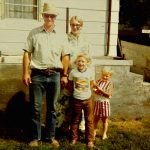 takes it’s toll on the caregiver, and I was worried about Pearl too. But Pearl loves Eddie, and she did what she had to do, and she has been rewarded with a husband who is healthy again, and getting stronger every day.
takes it’s toll on the caregiver, and I was worried about Pearl too. But Pearl loves Eddie, and she did what she had to do, and she has been rewarded with a husband who is healthy again, and getting stronger every day.
When we saw Eddie and Pearl, we were very pleased to see that they were both doing quite well. They looked a little tired, but then right now, everything they do is harder…physically harder. Eddie is in the process of re-learning how to do many things that we all take for granted every day. I didn’t know what to expect when we were getting ready to see Eddie, even though, Bob’s Uncle Butch Schulenberg had told us that Eddie was really improving. We didn’t know if Eddie could talk well, or walk well, or what. We were so relieved when Eddie walked into Butch’s house, smiling and talking clearly. We were so relieved, but we should not have been 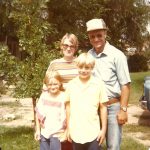 surprised. No, we should have known that Eddie would be back, because he is a strong man, and he won’t ever give up.
surprised. No, we should have known that Eddie would be back, because he is a strong man, and he won’t ever give up.
Eddie spent most of his adult life working in the Peabody coal mine in Colstrip, Montana. He worked hard to support his family, and when he was home, he worked to renovate their home. He and Pearl have always had a garden, and worked together to grow fresh vegetables for their family. In fact, they have both worked hard all their lives. That is what has made them the strong people they are, and that is why I know that Eddie will come back from this stronger than ever. Today is Eddie’s birthday. Happy birthday Eddie!! Have a great day!! We love you!!
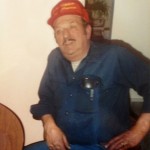 In the United States, you don’t often expect to become friends with a Russian man, but that is exactly what happened with my dad, Allen Spencer. Dad was working at WOTCO in Casper at the time, and his friend, Vladimir worked there as well. For Vladimir, the United States was the epitome of the word freedom. He loved the United States, and as an immigrant, who loved the United States, he wanted to learn the language. He was working very hard on it when he and my dad met. Dad was excited about Vladimir too. He had never known anyone from Russia, and really, never expected to. He told Mom and my younger sister, Allyn Hadlock that there was a Russian man working with him and he wanted to learn Russian so he could talk to him.
In the United States, you don’t often expect to become friends with a Russian man, but that is exactly what happened with my dad, Allen Spencer. Dad was working at WOTCO in Casper at the time, and his friend, Vladimir worked there as well. For Vladimir, the United States was the epitome of the word freedom. He loved the United States, and as an immigrant, who loved the United States, he wanted to learn the language. He was working very hard on it when he and my dad met. Dad was excited about Vladimir too. He had never known anyone from Russia, and really, never expected to. He told Mom and my younger sister, Allyn Hadlock that there was a Russian man working with him and he wanted to learn Russian so he could talk to him.
Dad bought a Russian/English dictionary, and began to study it. He had some specific phrases he wanted to learn, such as, Hello, How are you, Do you like America, and Do you have a family. Every night they sat down at the table to work through the dictionary, figuring out what he would say next. They also learned that certain symbols, 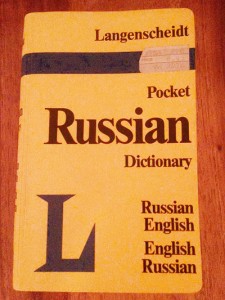 some that we use today, could mean something very different in Russian. The American symbol for “ok” is a good example. In Russian that symbol, with the circle of the thumb and forefinger, is a cuss word. It is very similar to flipping someone the bird. They laughed about that one. Then, when Dad wanted to say Dirty Rat, Allyn told him to use that American symbol for ok, because that should do it. That really got them laughing, and it still makes Allyn laugh to this day when she thinks about it.
some that we use today, could mean something very different in Russian. The American symbol for “ok” is a good example. In Russian that symbol, with the circle of the thumb and forefinger, is a cuss word. It is very similar to flipping someone the bird. They laughed about that one. Then, when Dad wanted to say Dirty Rat, Allyn told him to use that American symbol for ok, because that should do it. That really got them laughing, and it still makes Allyn laugh to this day when she thinks about it.
I think the thing that Vladimir liked so much about my dad was the fact that he tried to learn Russian, and that he reached out to a foreigner too. Vladimir and his wife didn’t have very many people that he could visit with…at least not in Russian. He was just so pleased that Dad was actually learning Russian. I’m not saying that Dad was fluent at Russian. In fact, his Russian could be considered comical at times, but the main thing was that he tried. Dad and Vladimir became the best of friends, and mom and Vladimir’s wife were friends too. They were invited to dinner at Vladimir’s house, and his wife made Borscht. Borscht is a beet soup. Now, I have to tell you that Dad must have really felt a friendship with Vladimir, because Dad hated beets, but he ate that soup. They told Mom and Dad that in Russia the people didn’t have very much meat, so their meals consisted of potatoes and vegetables. They were able to buy more meat now 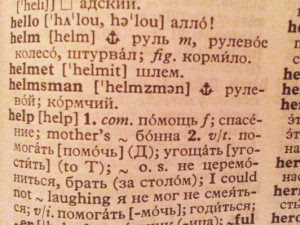 though, since coming to America, so when they had their American friends over for dinner, they bought meat for the Borscht…mostly because Americans are used to eating meat.
though, since coming to America, so when they had their American friends over for dinner, they bought meat for the Borscht…mostly because Americans are used to eating meat.
Vladimir and his wife wanted to be like the American people, because they loved this country. The did their very best to Americanize everything they did, because they wanted to be true Americans. This was the true melting pot…every foreigners dream, and they wanted to be a part of it. Dad and his Russian co-worker became good friends, and Vladimir always appreciated Dad’s efforts to make him feel at home in a new land.
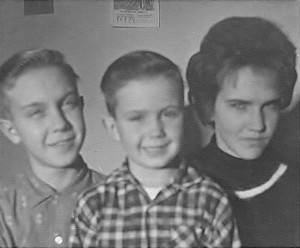 The other day, I was talking with my cousin, Shirley Cameron on instant message through Facebook, when she brought up an old memory…a blast from our past. Shirley’s mom, Ruth Wolfe was my dad, Allen Spencer’s younger sister, and our families were very close…especially when the Wolfe family still lived in Casper, and we were all little kids. Shirley was the oldest of the three Wolfe siblings, with two younger brothers, Larry and Terry. My older sister, Cheryl Masterson fell in between Larry and Terry, and I was four months younger than Terry. Our three younger sisters, Caryl Reed, Alena Stevens, and Allyn Hadlock were the youngest ones. Back in those days, the fun you had depended on your imagination. I guess we all had imagination, but Shirley really seemed to be able to come up with great ideas. And she was able to carry them out too.
The other day, I was talking with my cousin, Shirley Cameron on instant message through Facebook, when she brought up an old memory…a blast from our past. Shirley’s mom, Ruth Wolfe was my dad, Allen Spencer’s younger sister, and our families were very close…especially when the Wolfe family still lived in Casper, and we were all little kids. Shirley was the oldest of the three Wolfe siblings, with two younger brothers, Larry and Terry. My older sister, Cheryl Masterson fell in between Larry and Terry, and I was four months younger than Terry. Our three younger sisters, Caryl Reed, Alena Stevens, and Allyn Hadlock were the youngest ones. Back in those days, the fun you had depended on your imagination. I guess we all had imagination, but Shirley really seemed to be able to come up with great ideas. And she was able to carry them out too.
We started talking about the games we played when we were out at their place, like wagon train. Of course, we didn’t have a real covered wagon or a team of horses, but that didn’t mean that we would have to be the 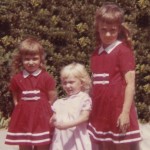 horses for our pull type wagons, because My aunt and uncle had a tractor, and Shirley knew how to drive it. So we hooked the wagons to the tractor, and headed down the road near their place. Oh sure, sometimes the whole thing would break down, but then what would a wagon train be without a breakdown. Even in the pioneer days, the wagons broke down…right?
horses for our pull type wagons, because My aunt and uncle had a tractor, and Shirley knew how to drive it. So we hooked the wagons to the tractor, and headed down the road near their place. Oh sure, sometimes the whole thing would break down, but then what would a wagon train be without a breakdown. Even in the pioneer days, the wagons broke down…right?
Shirley had a set of dishes, and like the wagon trains of the wild west, we brought our own food the long trip…usually. Of course, sometimes we had to improvise. Since we didn’t really have a way to go hunting, we had to make due with what was available to us, and the best cooking we did was when we made mud pies. They probably didn’t taste good, and I’ll never know, because I never tasted them, but we could make them look pretty good…in a hamburger sort of way. I’m sure there were other things like vegetables picked out of Aunt Ruth’s garden, and maybe apples or berries that we came across, whether they were edible or not. No matter what we came up with, real or imagined, we always had a lot of fun playing wagon train or any other game we came up with to play. It was always interesting, but I think in reality it was Shirley who had all the great 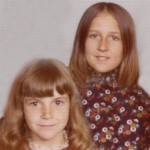 ideas…maybe with a little help from Cheryl.
ideas…maybe with a little help from Cheryl.
We were all as close as sisters or best friends, but we were more than that…we were cousins, and that is a forever friend…kind of like a sister is a forever friend. For Shirley, we were like the sisters she never had. Of course, we didn’t really understand what a big deal that was, because we were five sisters. We had never really known a time without our sisters, but Shirley had two brothers, and even though they were close, they weren’t like sisters. Boys think differently than girls. They like to do different things than girls. It just wasn’t the same. Yes, we played the games the boys wanted to play too sometimes, but we sure had a good time playing wagon train with Shirley.
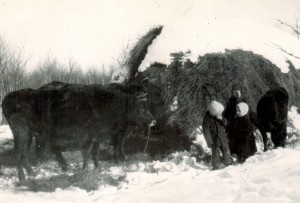 Kids have always had a fascination with animals. Any animal will do, but pets don’t seem to fall into the same category as other animals. I suppose that the reason for that is that after a little bit of time with a pet, they become normal everyday parts of the family. It doesn’t mean the child doesn’t love the pet, because they do, but the pet is an animal they see everyday, often in the house, so it’s nothing special. Farm animals, on the other hand are something different. Here is an animal that isn’t a domesticated pet, and yet it isn’t afraid of people either. They understand that they need people to bring them their food and water, and they also understand that people aren’t usually scary. Yes, the animal could hurt a child, especially if it stepped on the child, but for the most part the animal is as curious about the child as the child is about the animal.
Kids have always had a fascination with animals. Any animal will do, but pets don’t seem to fall into the same category as other animals. I suppose that the reason for that is that after a little bit of time with a pet, they become normal everyday parts of the family. It doesn’t mean the child doesn’t love the pet, because they do, but the pet is an animal they see everyday, often in the house, so it’s nothing special. Farm animals, on the other hand are something different. Here is an animal that isn’t a domesticated pet, and yet it isn’t afraid of people either. They understand that they need people to bring them their food and water, and they also understand that people aren’t usually scary. Yes, the animal could hurt a child, especially if it stepped on the child, but for the most part the animal is as curious about the child as the child is about the animal.
As small children, my dad and his siblings lived on a farm, so being around farm animals was a part of life. Still, that did not stop the curiosity about those animals from forming in their minds. When they went out to play, a part of their time outside always seemed to be spent visiting the other residents of their home. They would trek out to the haystacks where the cows would be feeding, and watch those strong, yet gentle animals eat, while the cows watched these tiny versions of the people who cared for them watching them. Funny how we all teach our kids not to stare, but when put in a situation like this, all that rudeness doesn’t seem to matter. Both sides are staring anyway, and since it isn’t a person…it just doesn’t matter. I suppose in many ways the whole situation was a lot like the petting zoos that most city children have been to as their only real interaction with farm animals.
When my girls were little, we too had a little place out in the country, and we raised a cow now and them. The girls were quite curious and really wanted to help with our cow. I had to be careful what they helped with, because when it came to grain…our cows always became pigs, and a tiny little girl could get trampled in the cows effort to get to what the cows considered candy. Most of the time the cows were a gentle as they could be, but the grain had to be given in a certain way, and very quickly, because they couldn’t wait to get to it. One cow we had named Rosie, due to her red color, was so excited that she was trying to follow me and still scratch her belly too. The end result was one good, but unintended kick to the back of my knee. It left a knot that stayed with me for the better part of 6 months. It was a good thing for Rosie that I liked her, and it wasn’t butchering time, or she would have been on our table in a matter of days.
Hay was always a very different matter. Little kids could be around cows eating hay, and there 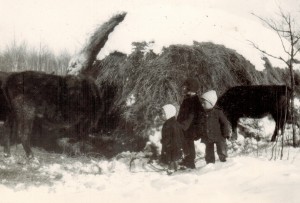 was not a dangerous rush to the food. I suppose that was the vegetables of the whole deal, and we all know how kids, which is what cows are a lot like when it comes to food, are with vegetables. The girls loved to help put the hay in the feeding troths for the cows, and then sit and watch them eat. I suppose it was an interesting sight. If you have never watched a cow eat, you might not know it, but they really are strange when they eat. I suppose that is why Aunt Ruth, Uncle Bill, and my dad were just standing there, out by the haystack when they could have been playing in the snow, just watching the cows eat.
was not a dangerous rush to the food. I suppose that was the vegetables of the whole deal, and we all know how kids, which is what cows are a lot like when it comes to food, are with vegetables. The girls loved to help put the hay in the feeding troths for the cows, and then sit and watch them eat. I suppose it was an interesting sight. If you have never watched a cow eat, you might not know it, but they really are strange when they eat. I suppose that is why Aunt Ruth, Uncle Bill, and my dad were just standing there, out by the haystack when they could have been playing in the snow, just watching the cows eat.
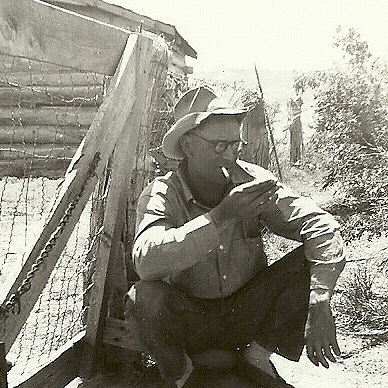 Bob’s family lived out in the country when I first met and later married him. They wanted to be able to raise farm animals, if they wanted to, and they later did do, as did we, but they also liked having a vegetable garden, and canning the vegetables they grew. It was a good sized vegetable garden, and Grandpa Knox took it upon himself to be the caretaker of that garden. Every day of the growing season would find him out there tending to that garden. And as a family, we all reaped the benefits of his labor, so we were glad he did it.
Bob’s family lived out in the country when I first met and later married him. They wanted to be able to raise farm animals, if they wanted to, and they later did do, as did we, but they also liked having a vegetable garden, and canning the vegetables they grew. It was a good sized vegetable garden, and Grandpa Knox took it upon himself to be the caretaker of that garden. Every day of the growing season would find him out there tending to that garden. And as a family, we all reaped the benefits of his labor, so we were glad he did it.
Grandpa was a rancher from way back, and so raising his own food was…just normal for him. When I met Bob, his grandparents were living on the same land has his parents…just across the yard in fact. That was not something I was used to, but it was a very efficient plan, and allowed Bob’s parents to take care of his mother’s aging parents as well. Everyone worked together to meet the needs of the family as a whole. With so many kids moving far away from their parents, to see this family pulling together for the greater good, was very cool.
When it was time to harvest the vegetables, we all went out and helped, and then began the women’s work. We prepared and canned the vegetables for later use. All of this was new to me, because having grown up in town, we didn’t normally can our fruits and vegetables, although I had made jelly before. Still, I felt a little…no, a lot…out of my element, but I quickly got the hang of it and later canned my own vegetables too.

Grandpa was a man of very few words, and one who always seemed most at home when he was out in the garden or doing other outdoor tasks. He may not have talked much, but he sure knew what he was doing when it came to gardening…a feat that anyone who knows me well, knows is not something I would put on my resume…much less write home about. To put it mildly, I have a brown thumb…except when it comes to roses, which I have no problem with. Don’t ask me why, because I don’t know. That said, when Grandpa’s gardening years were past. I found myself very much missing all the wonderful vegetables we got out of Grandpa’s garden.

